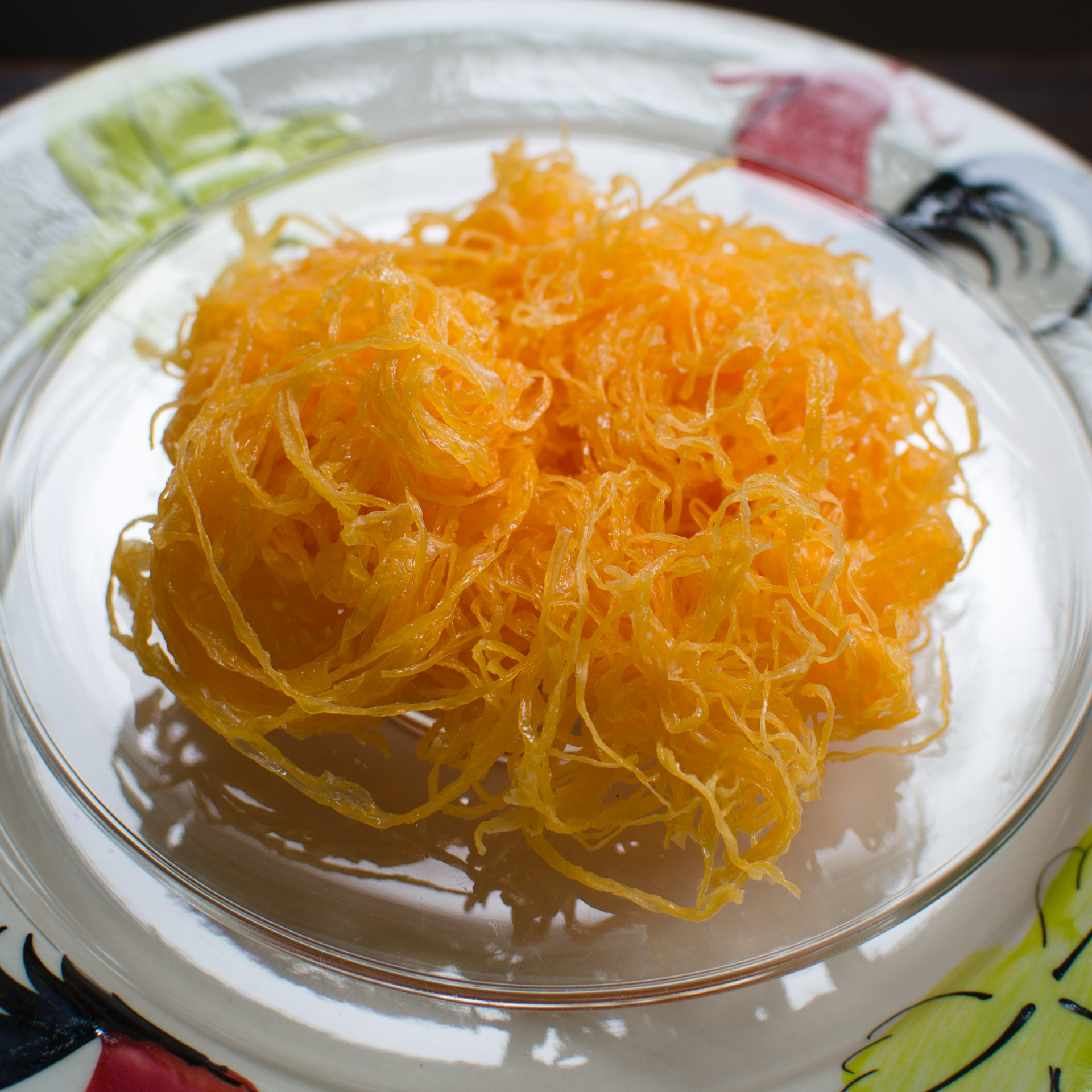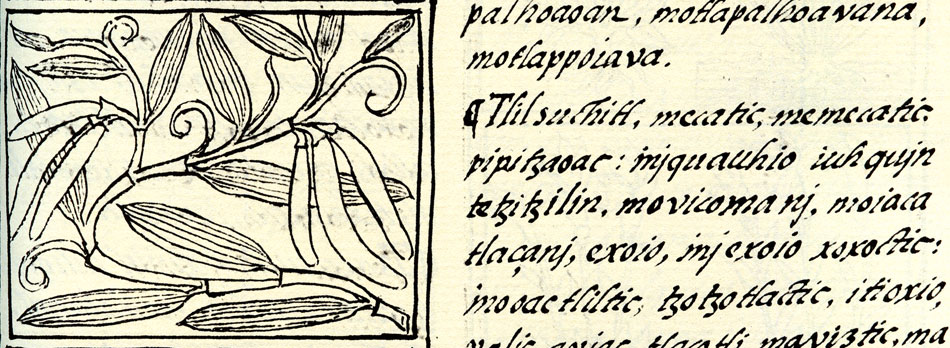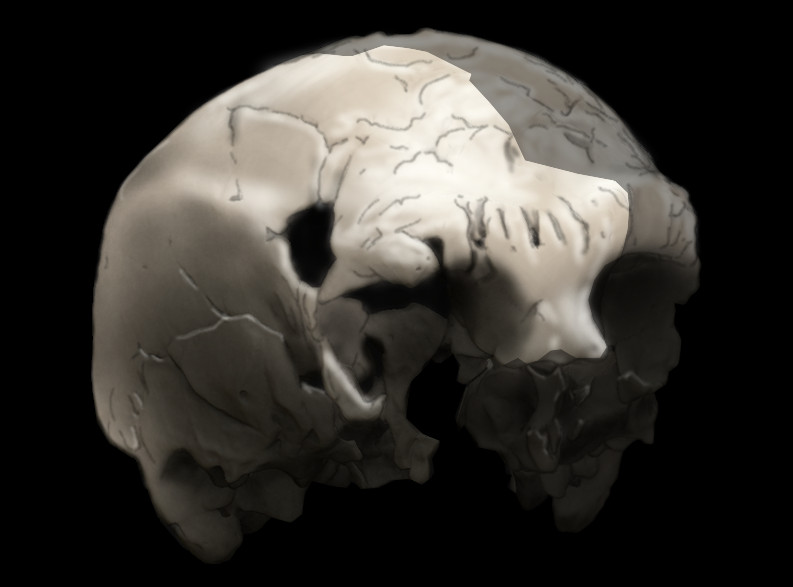|
Papo-de-anjo
' or ', roughly translated as "angel's double chin", is a traditional Portuguese dessert made chiefly from whipped egg yolks, baked and then boiled in sugar syrup. Like ''fios de ovos'' and several other classical Portuguese sweets based on egg yolks, ''papo de anjo'' is believed to have been created by Portuguese nuns around the 14th or 15th centuries. Laundry was a common service performed by convents and monasteries, and their use of egg whites for "starching" clothes created a large surplus of yolks. According to most recipes, the yolks must be whipped until they swell to double their original volume. Some recipes also call for egg whites (1--2 whites for each 10 yolks), beaten separately to stiff peaks consistency and gently mixed into the yolks. The mixture is then poured into greased muffin forms (about 1/2 tablespoon each) and baked until they are firm but still without crust. The pieces are then boiled lightly in the syrup, which may be flavored with rum, vanilla, or ... [...More Info...] [...Related Items...] OR: [Wikipedia] [Google] [Baidu] |
Fios De Ovos
''Fios de ovos'' () is a traditional Portuguese sweet food made out of egg yolks, drawn into thin strands and boiled in sugar syrup. It is used as a garnish on cakes and puddings, as a filling for cakes, or eaten on its own. Through Portuguese trade and colonization, the dish has spread to many countries in Asia. In Japan, it is known as ''keiran sōmen'' (鶏卵素麺, ), in Cambodia as ''vawee'' (), in Malaysia as ''jala mas'' (), in Thailand as ''foi thong'' (; ),''Bangkok Post Educational Services'',Three tempting Thai delicacies. Accessed on October 29, 2011. and in the Malabar region of Kerala, India as ''muttamala'' (മുട്ടമാല; or 'egg necklace'). This dish is called ''letria'' in Goa. ''Fios de ovos'' is also popular in Brazil, as well as Spain, where it is known as ''huevo hilado''. In Seville, it is shaped into peaked cones called '. History Like other egg-based Portuguese sweets, ''fios de ovos'' is believed to have been created by Portuguese ... [...More Info...] [...Related Items...] OR: [Wikipedia] [Google] [Baidu] |
Portugal
Portugal, officially the Portuguese Republic, is a country on the Iberian Peninsula in Southwestern Europe. Featuring Cabo da Roca, the westernmost point in continental Europe, Portugal borders Spain to its north and east, with which it shares Portugal-Spain border, the longest uninterrupted border in the European Union; to the south and the west is the North Atlantic Ocean; and to the west and southwest lie the Macaronesia, Macaronesian archipelagos of the Azores and Madeira, which are the two Autonomous Regions of Portugal, autonomous regions of Portugal. Lisbon is the Capital city, capital and List of largest cities in Portugal, largest city, followed by Porto, which is the only other Metropolitan areas in Portugal, metropolitan area. The western Iberian Peninsula has been continuously inhabited since Prehistoric Iberia, prehistoric times, with the earliest signs of Human settlement, settlement dating to 5500 BC. Celts, Celtic and List of the Pre-Roman peoples of the Iberia ... [...More Info...] [...Related Items...] OR: [Wikipedia] [Google] [Baidu] |
Convent
A convent is an enclosed community of monks, nuns, friars or religious sisters. Alternatively, ''convent'' means the building used by the community. The term is particularly used in the Catholic Church, Lutheran churches, and the Anglican Communion. Etymology and usage The term ''convent'' derives via Old French from Latin ''conventus'', perfect participle of the verb ''convenio'', meaning "to convene, to come together". It was first used in this sense when the eremitical life began to be combined with the cenobitical. The original reference was to the gathering of mendicants who spent much of their time travelling. Technically, a monastery is a secluded community of monastics, whereas a friary or convent is a community of mendicants (which, by contrast, might be located in a city), and a canonry is a community of canons regular. The terms abbey and priory can be applied to both monasteries and canonries; an abbey is headed by an abbot, and a priory is a lesser depend ... [...More Info...] [...Related Items...] OR: [Wikipedia] [Google] [Baidu] |
Zabaione
Zabaione () or, through hypercorrection, zabaglione (, ; ), is an Italian dessert, or sometimes a beverage, made with egg yolks, sugar, and a sweet wine (usually Moscato d'Asti or Marsala wine). Some versions of the recipe incorporate spirits such as cognac. The dessert version is a light custard, whipped to incorporate a large amount of air. Since the 1960s, in restaurants in areas of the US with large Italian populations, zabaione is usually served with strawberries, blueberries, peaches, etc., in a champagne coupe, and is often prepared tableside for dramatic effect. In France, it is called ''sabayon''. The dessert is popular in Argentina and Uruguay, where it is known as ''sambayón'' (from the Piedmontese ) and is a popular ice cream flavour. Espresso zabaglione incorporates the sugar and egg yolk mixture into a small cup to be filled with a shot of espresso coffee, which can be served frozen. History Although accounts vary, the Italian dessert dates as far back as the ... [...More Info...] [...Related Items...] OR: [Wikipedia] [Google] [Baidu] |
Quindim
Quindim () is a popular Brazilian baked dessert with Portuguese heritage, made chiefly from sugar, egg yolks and ground coconut. It is a custard and usually presented as an upturned cup with a glistening surface and intensely yellow color. The mixture can also be made in a large ring mold (like a savarin mold) in which case it is called a "quindão" and served in slices. Etymology The word quindim comes from ''dikende'' in Kikongo, a Bantu language. It means "the gestures, or demeanor, or humor characteristic of adolescent girls." Origins The heavy use of egg yolks is characteristic of many Portuguese sweets and pastries, such as the '' papo de anjo'' ("angel's crop") and ''fios de ovos'' ("egg threads"). Their combination with coconut and sugar was probably created by African slaves in 17th century Brazilian Northeast, where coconuts were abundant and sugar (from sugarcane) was a major industry. In popular culture Quindim is also a rhinoceros character (named after the ... [...More Info...] [...Related Items...] OR: [Wikipedia] [Google] [Baidu] |
Orange (fruit)
The orange, also called sweet orange to distinguish it from the bitter orange (''Citrus × aurantium''), is the fruit of a tree in the family (biology), family Rutaceae. Botanically, this is the hybrid Citrus × sinensis, ''Citrus'' × ''sinensis'', between the pomelo (''Citrus maxima'') and the mandarin orange (''Citrus reticulata''). The chloroplast genome, and therefore the maternal line, is that of pomelo. There are many related hybrids including of mandarins and sweet orange. The sweet orange has had its full Whole genome sequencing, genome sequenced. The orange originated in a region encompassing Northern and southern China, Southern China, Northeast India, and Myanmar; the earliest mention of the sweet orange was in Chinese literature in 314 BC. Orange trees are widely grown in tropical and subtropical areas for their sweet fruit. The fruit of the Citrus × sinensis, orange tree can be eaten fresh or processed for its juice or fragrant peel (fruit), peel. In 2022, 76 mil ... [...More Info...] [...Related Items...] OR: [Wikipedia] [Google] [Baidu] |
Vanilla
Vanilla is a spice derived from orchids of the genus ''Vanilla (genus), Vanilla'', primarily obtained from pods of the flat-leaved vanilla (''Vanilla planifolia, V. planifolia''). ''Vanilla'' is not Autogamy, autogamous, so pollination is required to make the plants produce the fruit from which the vanilla spice is obtained. In 1837, Belgian botanist Charles François Antoine Morren discovered this fact and pioneered a method of artificially pollinating the plant. The method proved financially unworkable and was not deployed commercially. In 1841, Edmond Albius, a 12-year-old slave who lived on the French island of Réunion in the Indian Ocean, discovered that the plant could be hand-pollination, hand-pollinated. Hand-pollination allowed global cultivation of the plant. Noted French botanist and plant collector Jean Michel Claude Richard falsely claimed to have discovered the technique three or four years earlier. By the end of the 20th century, Albius was considered the ... [...More Info...] [...Related Items...] OR: [Wikipedia] [Google] [Baidu] |
Belo Horizonte
Belo Horizonte is the List of largest cities in Brazil, sixth-largest city in Brazil, with a population of around 2.3 million, and the third largest metropolitan area, containing a population of 6 million. It is the List of cities in South America, 13th-largest city in South America and the Largest cities in the Americas, 18th-largest in the Americas. The metropolis is anchor to the Greater Belo Horizonte, Belo Horizonte metropolitan area, ranked as the List of metropolitan areas in Brazil, third most populous metropolitan area in Brazil and the List of metropolitan areas in the Americas, 17th most populous in the Americas. Belo Horizonte is the capital of States of Brazil, the state of Minas Gerais, Brazil's List of Brazilian states by population, second-most populous state. It is the first planned modern city in Brazil. The region was first settled in the early 18th century, but the city as it is known today was planned and constructed in the 1890s to replace Ouro Preto ... [...More Info...] [...Related Items...] OR: [Wikipedia] [Google] [Baidu] |
Egg White
Egg white is the clear liquid (also called the albumen or the glair/glaire) contained within an egg. In chickens, it is formed from the layers of secretions of the anterior section of the hen's oviduct during the passage of the egg. It forms around fertilized or unfertilized egg yolks. The primary natural purpose of egg white is to protect the yolk and provide additional nutrition for the growth of the embryo (when fertilized). Egg white consists primarily of about 90% water into which about 10% proteins (including albumins, mucoproteins, and globulins) are dissolved. Unlike the yolk, which is high in lipids (fats), egg white contains almost no fat, and carbohydrate content is less than 1%. Egg whites contain about 56% of the protein in the egg. Egg white has many uses in food (e.g. meringue, mousse) as well as many other uses (e.g. in the preparation of vaccines such as those for influenza). Composition Egg white makes up around two-thirds of a chicken egg by weight. ... [...More Info...] [...Related Items...] OR: [Wikipedia] [Google] [Baidu] |
Laundry
Laundry is the washing of clothing and other textiles, and, more broadly, their drying and ironing as well. Laundry has been part of history since humans began to wear clothes, so the methods by which different cultures have dealt with this universal human need are of interest to several branches of scholarship. Laundry work has traditionally been highly gendered, with the responsibility in most cultures falling to women (formerly known as laundresses or washerwomen). The Industrial Revolution gradually led to mechanized solutions to laundry work, notably the washing machine and later the tumble dryer. Laundry, like cooking and child care, is still done both at home and by commercial establishments outside the home. The word "laundry" may refer to the clothing itself, or to the place where the cleaning happens. An individual home may have a laundry room; a utility room includes, but is not restricted to, the function of washing clothes. An apartment building or student ... [...More Info...] [...Related Items...] OR: [Wikipedia] [Google] [Baidu] |
Dessert
Dessert is a course (food), course that concludes a meal; the course consists of sweet foods, such as cake, biscuit, ice cream, and possibly a beverage, such as dessert wine or liqueur. Some cultures sweeten foods that are more commonly umami, savory to create desserts. In some parts of the world, there is no tradition of a dessert course to conclude a meal. Historically, the dessert course consisted entirely of foods 'from the storeroom' (''de l’office''), including fresh, stewed, preserved, and dried fruits; nuts; cheese and other dairy dishes; Cookie, dry biscuits (cookies) and wafers; and ices and Ice cream, ice creams. Sweet dishes from the kitchen, such as freshly prepared pastries, meringues, custards, puddings, and baked fruits, were served in the Entremet, entremets course, not in the dessert course. By the 20th century, though, sweet entremets had come to be included among the desserts. The modern term ''dessert'' can apply to many sweets, including fruit, custard ... [...More Info...] [...Related Items...] OR: [Wikipedia] [Google] [Baidu] |
Portuguese People
The Portuguese people ( – masculine – or ''Portuguesas'') are a Romance languages, Romance-speaking ethnic group and nation Ethnic groups in Europe, indigenous to Portugal, a country that occupies the west side of the Iberian Peninsula in Southern Europe, south-west Europe, who share Culture of Portugal, culture, ancestry and Portuguese language, language. The Portuguese state began with the founding of the County of Portugal in 868. Following the Battle of São Mamede (1128), Portugal gained international recognition as a Kingdom of Portugal, kingdom through the Treaty of Zamora and the papal bull Manifestis Probatum. This Portuguese state paved the way for the Portuguese people to unite as a nation. The Portuguese Portuguese maritime exploration, explored Hic sunt Dracones, distant lands previously unknown to Europeans—in the Americas, Africa, Asia and Oceania (southwest Pacific Ocean). In 1415, with the conquest of Ceuta, the Portuguese took a significant role in the ... [...More Info...] [...Related Items...] OR: [Wikipedia] [Google] [Baidu] |





